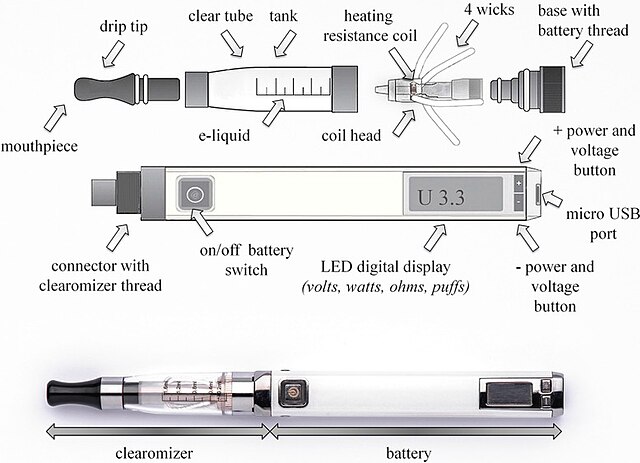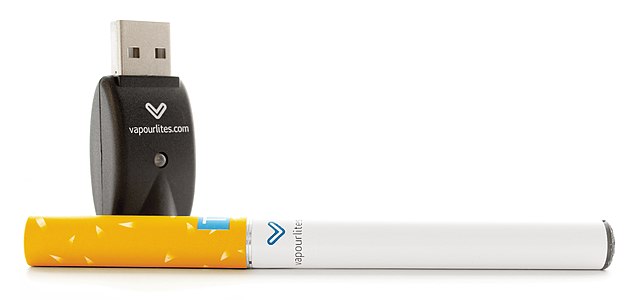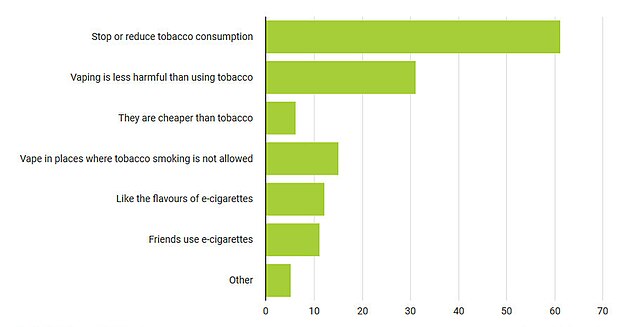Composition of electronic cigarette aerosol
The chemical composition of the electronic cigarette aerosol varies across and within manufacturers. Limited data exists regarding their chemistry. However, researchers at Johns Hopkins University analyzed the vape clouds of popular brands such as Juul and Vuse, and found "nearly 2,000 chemicals, the vast majority of which are unidentified."
Aerosol (vapor) exhaled by an e-cigarette user
An exploded view of an e-cigarette with transparent clearomizer and changeable dual-coil head. This model allows for a wide range of settings.
E-cigarette mouthpiece with particles of insoluble apparently thermally decomposed tobacco extract from the aerosol
Evidence of thermally decomposed material on the wick (of an e-cigarette) in proximity to the heating element
An electronic cigarette (e-cigarette) or vape is a device that simulates tobacco smoking. It consists of an atomizer, a power source such as a battery, and a container such as a cartridge or tank. Instead of smoke, the user inhales vapor. As such, using an e-cigarette is often called "vaping". The atomizer is a heating element that vaporizes a liquid solution called e-liquid, which quickly cools into an aerosol of tiny droplets, vapor and air. The vapor mainly comprises propylene glycol and/or glycerin, usually with nicotine and flavoring. Its exact composition varies, and depends on several things including user behavior.
A first-generation e-cigarette that resembles a tobacco cigarette, with a battery portion that can be disconnected and recharged using the USB power charger
An exploded view of an e-cigarette with transparent clearomizer and changeable dual-coil head. This model allows for a wide range of settings.
Reasons for initiating e-cigarette use in the European Union, in a 2018 Eurobarometer poll
The Ruyan e-cigar was first launched in China in 2004.







